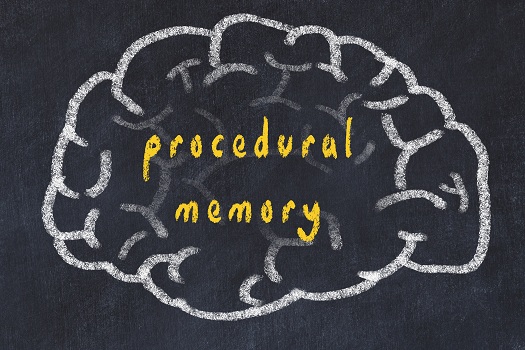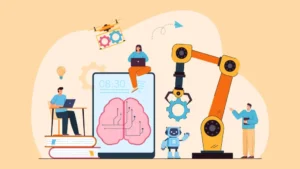Procedural Memory: The Hidden Engine Behind Everyday Skills
Introduction
When you ride a bicycle, type on a keyboard without looking, or play a musical instrument, you’re not consciously thinking about every single movement. Instead, your brain is drawing on procedural memory—a type of long-term memory responsible for learning and performing tasks automatically. While declarative memory (facts and events) helps us recall specific information, procedural memory quietly operates in the background, ensuring we can carry out routines with efficiency and precision.
This article explores the fascinating world of procedural memory—its definition, mechanisms, neurological basis, development, disorders, and applications in daily life, education, and artificial intelligence.
What is Procedural Memory?
Procedural memory is a form of implicit memory that enables us to learn skills and habits through repetition and practice. Unlike explicit memory, which requires conscious recall (like remembering a birthday), procedural memory functions unconsciously.
-
Example: You don’t need to consciously recall how to tie your shoelaces—you just do it.
-
It is often described as “muscle memory,” although the brain, not the muscles, stores these routines.
Procedural memory is crucial for motor skills, cognitive habits, and emotional regulation, making it a foundational component of human intelligence.
Key Characteristics of Procedural Memory
-
Implicit Nature
-
Operates automatically without conscious awareness.
-
Example: Driving a familiar route while lost in thought.
-
-
Durability
-
Procedural memories are resistant to forgetting, even after brain damage.
-
Patients with amnesia may forget names but can still play instruments they learned earlier.
-
-
Incremental Learning
-
Developed gradually through practice and repetition.
-
Unlike declarative memory, which can form instantly (e.g., remembering a phone number), procedural memory requires habit formation.
-
-
Domain-Specific
-
Exists across physical, cognitive, and emotional domains:
-
Motor skills (typing, dancing)
-
Problem-solving strategies (chess, math shortcuts)
-
Emotional conditioning (phobias, anxiety responses)
-
-
How Procedural Memory Works
Procedural memory relies on neural networks in the brain that encode, store, and retrieve skills. The process can be divided into stages:
-
Acquisition (Learning Stage)
-
Repeated exposure to a task builds neural pathways.
-
Example: Practicing piano scales until finger movements become automatic.
-
-
Consolidation
-
Skills become ingrained through sleep and repetition.
-
Sleep, particularly REM sleep, plays a major role in strengthening procedural memories.
-
-
Automatic Execution
-
Once established, the skill can be performed with little conscious effort.
-
Example: Touch typing without thinking about key positions.
-
Neurological Basis of Procedural Memory
Procedural memory is supported by several brain regions, each contributing to skill formation and execution:
-
Basal Ganglia
-
Crucial for motor learning and habit formation.
-
Degeneration of this area, as in Parkinson’s disease, impairs procedural learning.
-
-
Cerebellum
-
Coordinates fine motor skills and smooth execution of movements.
-
Essential for learning skills like balance in gymnastics or timing in music.
-
-
Motor Cortex
-
Stores motor commands for repetitive actions.
-
Directly involved in practicing and refining movement.
-
-
Prefrontal Cortex
-
Guides the transition from conscious practice to automatic execution.
-
Together, these brain regions form a distributed system that transforms repeated actions into effortless habits.
Procedural Memory vs Declarative Memory
| Feature | Procedural Memory | Declarative Memory |
|---|---|---|
| Type | Implicit | Explicit |
| Awareness | Unconscious, automatic | Conscious recall |
| Examples | Riding a bike, typing | Remembering names, facts, events |
| Formation Speed | Slow, requires practice | Can form quickly |
| Resistance to Amnesia | High | Vulnerable |
This distinction explains why amnesic patients (like the famous case of Henry Molaison, H.M.) could not form new declarative memories but retained procedural skills.
Development of Procedural Memory
Procedural memory begins forming early in childhood and continues throughout life:
-
Infancy: Babies learn to crawl and walk through repeated practice.
-
Childhood: Skills like riding a bike, handwriting, and language patterns become ingrained.
-
Adulthood: Professional expertise (surgery, coding, driving) relies heavily on procedural memory.
-
Aging: While declarative memory often declines with age, procedural memory remains relatively preserved.
Disorders Related to Procedural Memory
-
Parkinson’s Disease
-
Damage to basal ganglia leads to difficulty in learning or performing motor tasks.
-
-
Huntington’s Disease
-
Genetic disorder affecting procedural memory, especially motor coordination.
-
-
Amnesia
-
Declarative memory impaired, but procedural memory often intact.
-
-
Alzheimer’s Disease
-
Early stages preserve procedural memory, but later stages disrupt it.
-
-
Stroke & Brain Injury
-
Can impair specific procedural skills depending on the damaged region.
-
Procedural Memory in Everyday Life
Procedural memory silently shapes countless aspects of human life:
-
Language Use: Grammar and pronunciation patterns become automatic.
-
Sports Performance: Athletes rely on automated routines for precision.
-
Driving: Gear shifting, braking, and navigating become second nature.
-
Work Efficiency: Professionals automate repetitive tasks (typing, coding shortcuts).
-
Music & Arts: Musicians and artists develop fluency through procedural learning.
Educational Implications
Understanding procedural memory has transformed learning and teaching strategies:
-
Practice & Repetition
-
Frequent drills and exercises build strong neural pathways.
-
-
Experiential Learning
-
Hands-on activities (labs, workshops) reinforce procedural learning.
-
-
Spaced Repetition
-
Spacing practice sessions improves consolidation.
-
-
Gamification
-
Using games and simulations engages procedural learning more effectively.
-
Procedural Memory in Therapy
-
Physical Rehabilitation: Stroke patients relearn movement through repetitive exercises.
-
Cognitive-Behavioral Therapy (CBT): Helps reprogram automatic emotional responses.
-
Occupational Therapy: Reinforces daily living skills in patients with memory loss.
Procedural Memory and Artificial Intelligence
In recent years, AI researchers have looked at procedural memory models to improve machine learning systems.
-
Robotics: Robots use procedural-like memory to master repetitive tasks (assembly lines).
-
Autonomous Vehicles: Cars develop procedural routines for navigation and obstacle avoidance.
-
Language Models: AI “learns” linguistic patterns similar to how humans internalize grammar.
-
Gaming AI: NPCs use procedural routines to simulate human-like behavior.
This intersection between neuroscience and AI is pushing technology toward human-like skill learning.
Enhancing Procedural Memory
Researchers suggest strategies to strengthen procedural memory in daily life:
-
Sleep Optimization
-
Ensures consolidation of motor and cognitive skills.
-
-
Mindful Repetition
-
Focused practice creates stronger neural connections.
-
-
Cross-training
-
Learning multiple related skills enhances adaptability.
-
-
Healthy Lifestyle
-
Exercise and diet boost brain regions linked to memory.
-
Future Research Directions
-
Neuroplasticity Studies: Understanding how the brain adapts to new procedural skills.
-
Brain-Computer Interfaces (BCI): Assisting patients in regaining procedural abilities.
-
AI-Human Integration: Creating systems that can learn and automate like the human brain.
-
Memory Enhancement Drugs: Potential therapies to boost procedural learning.
Conclusion
Procedural memory is the silent engine behind many of our daily actions, from walking and speaking to playing instruments and excelling in sports. Its unique qualities—automatic execution, durability, and resistance to forgetting—make it vital for survival, learning, and creativity.
Understanding procedural memory not only sheds light on how humans function but also inspires innovations in education, therapy, and artificial intelligence. While we often take it for granted, procedural memory remains one of the most remarkable aspects of human cognition—a hidden ally shaping our ability to live, learn, and thrive.
https://bitsofall.com/google-search-ai-mode/
https://bitsofall.com/https-yourblog-com-metas-translation-features-breaking-language-barriers/
AI Memory Architecture: Building the Brain of Intelligent Machines
ChatGPT Controls: Understanding, Customizing, and Mastering AI Interactions








